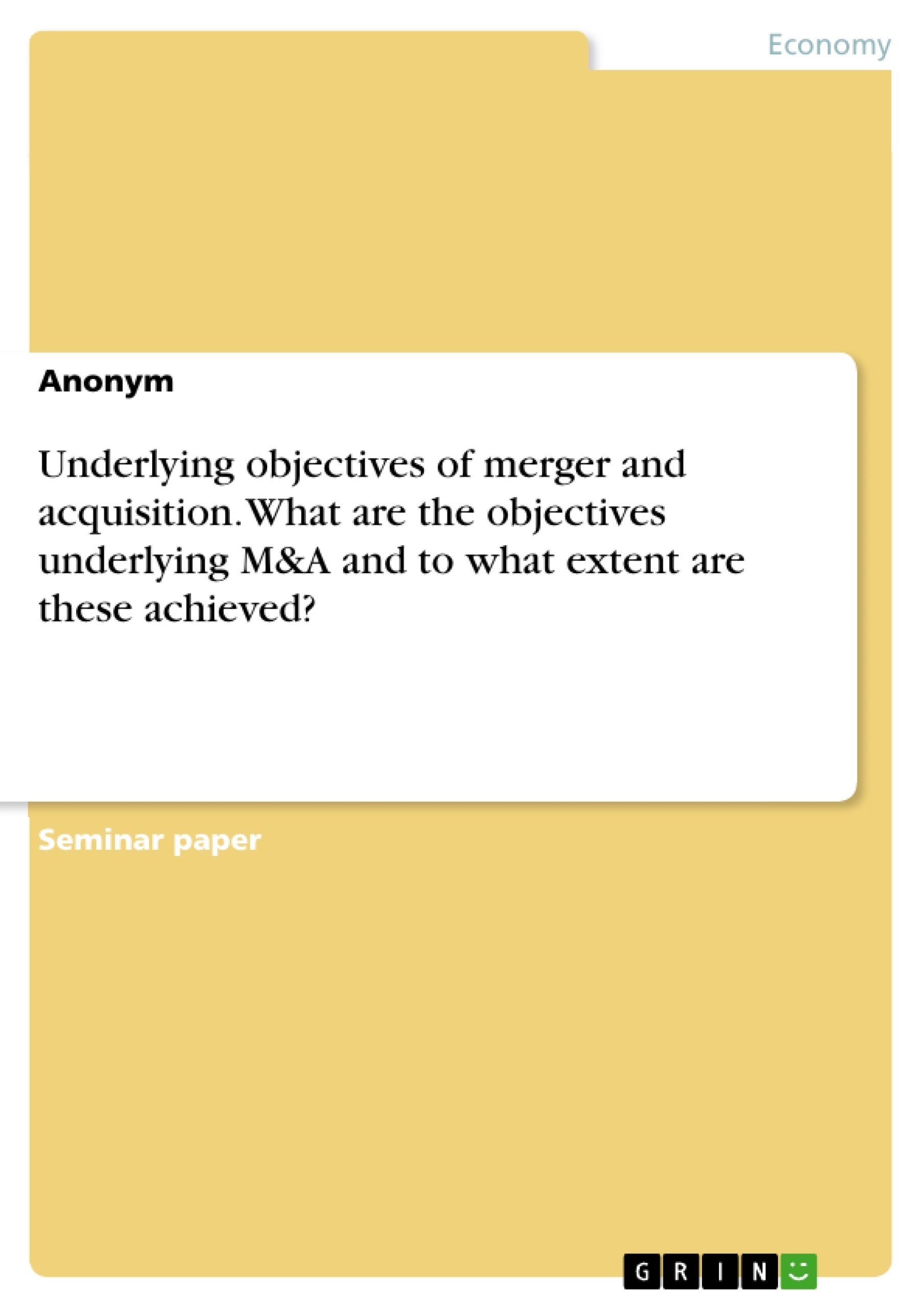The purpose of a company’s growth by merger and acquisition (M&A), rather than organic growth, is manifold. Common theories suggest the main reasons to be for instance greater market share or managers’ interest for status and power. However, empirical studies show that most business combinations fail to create shareholder value. What encourages companies,like Pfizer or Google, to invest billions of Dollars in M&A, when empirical results are so discouraging?
This essay gives a brief introduction on the terminology of M&A, followed by seven core objectives (market power, economies of scale, synergy effects, diversification, the incorporation of transaction costs, value discrepancy and managerial utility), and finally examines the extent to which these objectives are achieved in practice.
Table of content
1. Introduction
2. M&A fundamentals
3. MotivesforM&A
3.1 Marketpower
3.2 Economiesofscale
3.3 Synergyeffects
3.4 Diversification
3.5 Incorporate transaction cost
3.6 Valuediscrepancy
3.7 Managerial utility
4. Application to business environment
4.1 Google's acquisition of Motorola
4.2 Pfizer'sacquisition of Allergan
5. Conclusion
- Arbeit zitieren
- Anonym,, 2015, Underlying objectives of merger and acquisition. What are the objectives underlying M&A and to what extent are these achieved?, München, GRIN Verlag, https://www.grin.com/document/358856
-

-

-

-
Laden Sie Ihre eigenen Arbeiten hoch! Geld verdienen und iPhone X gewinnen. -

-
Laden Sie Ihre eigenen Arbeiten hoch! Geld verdienen und iPhone X gewinnen. -

-
Laden Sie Ihre eigenen Arbeiten hoch! Geld verdienen und iPhone X gewinnen. -

-
Laden Sie Ihre eigenen Arbeiten hoch! Geld verdienen und iPhone X gewinnen. -

-
Laden Sie Ihre eigenen Arbeiten hoch! Geld verdienen und iPhone X gewinnen.

